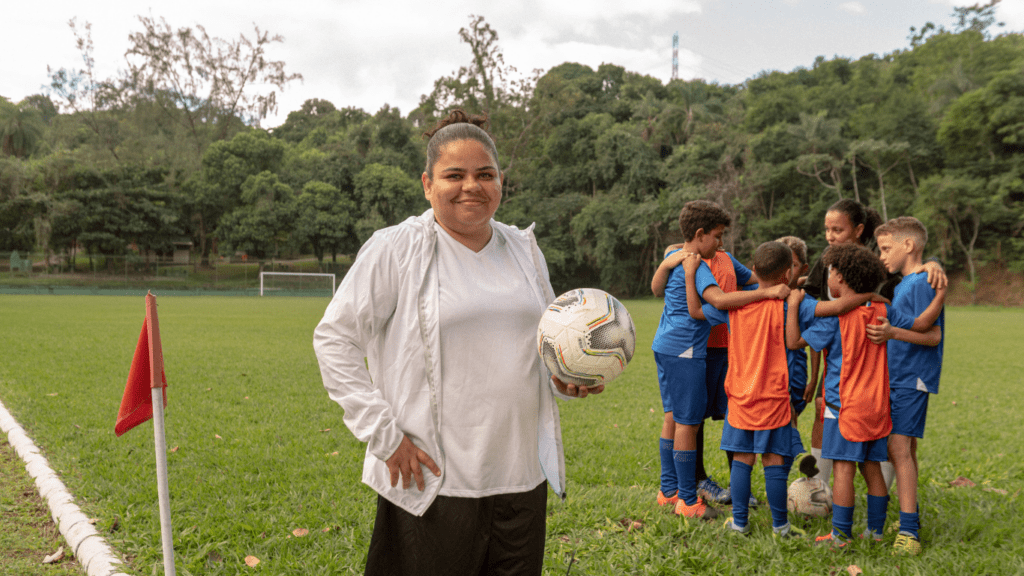Coaching multiple teams or sports can feel like juggling flaming torches while riding a unicycle. I know firsthand how challenging it is to balance practice schedules, game days, and the unique needs of each team.
With so much on my plate, mastering time management becomes essential for success both on and off the field. In this fast-paced world, effective time management not only keeps me organized but also empowers my athletes to thrive.
I’ve learned that prioritizing tasks and streamlining communication can make all the difference. Whether you’re a seasoned coach or just starting out, these practical tips will help you maximize your time and enhance your coaching experience.
Let’s dive into strategies that can transform chaos into harmony, allowing you to focus on what truly matters: developing your athletes and fostering teamwork.
Understanding the Challenges of Coaching Multiple Teams
Coaching multiple teams presents unique challenges that require efficient time management. Balancing various commitments effectively enhances both team performance and personal well-being.
Balancing Commitments Across Teams
Balancing commitments across teams means managing practices, games, and individual needs simultaneously. Each team demands specific attention and personalized coaching strategies. Prioritizing tasks helps maintain focus.
I recommend assessing each team’s schedules monthly to allocate time effectively. Scheduling shared practices or crossover sessions maximizes time and resources. Open communication with athletes fosters understanding of availability and expectations.
Engaging assistant coaches or team leaders can distribute responsibilities, lessening individual burdens.
Managing Diverse Schedules
Managing diverse schedules poses difficulties for multi-team coaches. Conflicting practice times and game days can create chaos. I suggest using digital calendars to visualize overlapping events and available time slots.
Establishing a set routine for practices can streamline scheduling, making it easier to coordinate sessions. Implementing a centralized communication platform, such as a group messaging app or a team management tool, ensures everyone stays informed about changes.
Keeping flexibility within the schedule accommodates unexpected events and fosters a supportive coaching environment.
Essential Time Management Techniques
Efficient time management techniques streamline my coaching responsibilities across multiple teams or sports. Implementing these methods ensures each team receives focused training while I maintain overall organization.
- Prioritizing Tasks Effectively: I assess each team’s immediate needs, evaluating practice sessions, game days, and strategic goals. I create a prioritized list of tasks based on urgency and importance, focusing on high-impact activities that advance team objectives.
- Utilizing Scheduling Tools: I leverage digital scheduling tools to visualize overlapping events and manage practices efficiently. Programs like Google Calendar or TeamSnap allow me to input each team’s schedule, ensuring no conflicts arise.
Developing a Structured Coaching Plan
A structured coaching plan enhances my effectiveness as a multi-team or multi-sport coach. It provides clarity and direction for both me and my athletes, ensuring that every practice and game aligns with our goals.
Setting Goals for Each Team
I establish specific, measurable, achievable, relevant, and time-bound (SMART) goals for each team. These goals guide my coaching strategy and focus our training sessions. For instance, I outline performance objectives, such as improving individual skills or enhancing team cohesion.
Monthly reviews of these goals help me track progress and make necessary adjustments. Each team benefits from tailored goals, allowing for targeted development in their respective sports.
Creating a Consistent Routine
I prioritize a consistent routine for practices to promote stability and familiarity. Routines help each team understand expectations and optimize their training time. I set a regular schedule for practices, ensuring that all team members can plan accordingly.
For example, having teams practice on set days and times promotes attendance and enhances team synergy. I also include warm-ups and cool-downs as part of the routine, reinforcing the importance of physical preparation and recovery.
By sticking to this routine, I cultivate a structured environment that maximizes both team performance and my efficiency as a coach.
Encouraging Team Communication
Effective communication serves as the backbone of successful multi-team coaching. Fostering open lines of dialogue among athletes, assistant coaches, and parents improves collaboration and minimizes misunderstandings.
Establishing Open Lines of Dialogue
Establishing open lines of dialogue promotes a culture of transparency. I prioritize regular team meetings to discuss schedules, goals, and expectations. Frequent communication ensures athletes remain informed about practice times, changes, and commitments.
I encourage feedback by creating a safe space for players to express concerns or suggestions. Using team meetings or individual check-ins facilitates personal connections and strengthens trust. These interactions help maintain alignment among all team members and enhance group cohesion.
Utilizing Technology for Coordination
Utilizing technology streamlines communication and coordination across multiple teams. I implement a centralized platform, such as a dedicated group chat or collaboration app, to share updates and key information quickly.
Digital calendars, like Google Calendar or TeamSnap, allow for real-time scheduling adjustments while keeping everyone informed. Color-coding practices, games, and meetings helps athletes and coaches track their commitments easily.
Sending reminders and alerts through these platforms reduces the likelihood of missed events and fosters a sense of accountability within the teams. By leveraging technology, I enhance overall communication efficiency and ensure athletes stay engaged and informed.
Time Management Best Practices for Coaches
Effective time management for coaches includes delegating responsibilities and prioritizing self-care to maintain balance. Implementing these practices ensures I can focus on team effectiveness and personal well-being.
Delegating Responsibilities
Delegating responsibilities is essential for optimizing time management in multi-team coaching scenarios. Assign tasks to assistant coaches, such as planning drills, managing equipment, or coordinating travel.
Utilize team captains to facilitate communication between players and me. Empowering others creates opportunities for development while reducing my workload. Establish clear expectations and guidelines for delegated tasks.
Break down responsibilities into specific components, ensuring everyone understands their role. Regular check-ins with the team foster accountability and streamline task completion. Lastly, celebrate accomplishments to motivate the team and reinforce the benefits of collaboration.
Avoiding Burnout Through Self-Care
Self-care plays a crucial role in preventing burnout as a coach managing multiple teams. Prioritize physical health through exercise, balanced nutrition, and adequate sleep to maintain energy levels.
Create dedicated time for personal interests and relaxation to recharge mentally and emotionally. Incorporate mindfulness practices, such as meditation or deep-breathing exercises, to reduce stress.
Set boundaries for work and personal time, ensuring I detach from coaching responsibilities when needed. Regularly assess my workload and adjust commitments to maintain a manageable schedule, allowing me to stay focused and energized for my teams.



